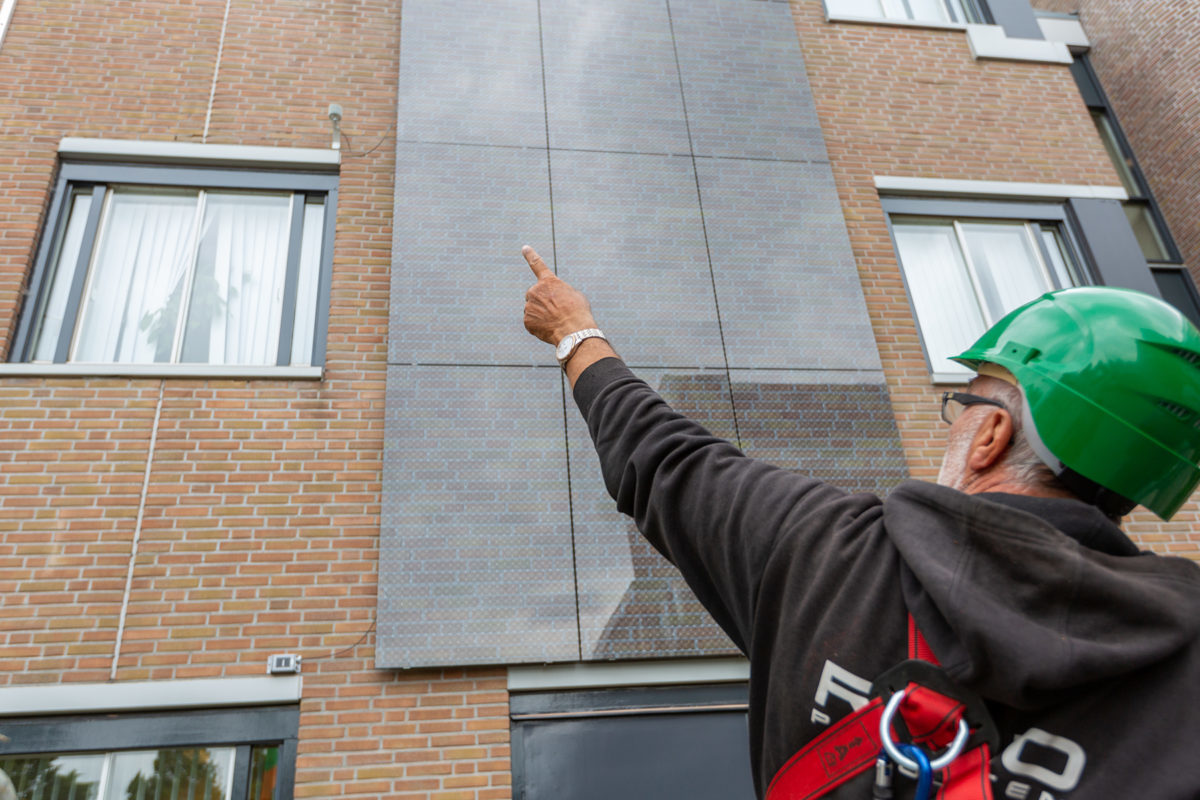From pv magazine global
Dutch construction group BAM said last week that it has installed startup Solar Visuals’ facade solar modules at its head office in Bunnik, in the province of Utrecht.
The modules – which were originally developed by Dutch architectural firm UNStudio, in collaboration with TNO, Design Innovation Group (DIG), and printing company TS Visuals – are unique and attractive, according to BAM. “The modules have an art-like appearance when looking from nearby,” Lenneke Slooff-Hoek, a senior scientist for TNO, told pv magazine.
The panels can be fabricated in any size or color pattern, so they should not be seen as common colored modules, Slooff-Hoek claimed.
“Most of the colored modules on the market use a ceramic coating on the glass to give the panel the homogeneous colored appearance,” she said, adding that a few products use multicolored prints inside the modules. The difference is in the way in which the color is generated.
“Where the other multicolor technologies use a full-area print with a certain transparency, the newly developed facade solar modules have a partly transparent colored layer made of small dots,” Slooff-Hoek explained. “From nearby you see mainly the dot pattern, but when looking at a distance you see the image appear.”
Different patterns, or rasterizations, can be used. The choice depends on the appearance of the image and the viewing distance. The modules reproduce the color of the facades, but also their appearance. “For this reason, we are working on new front side materials that are less shiny than glass and even can have a surface texture,” Slooff-Hoek said.
The first modules were based on metal wrap-through (MWT) back contact technology that was originally developed by the Energy Research Centre of the Netherlands (ECN). To minimize the losses, the colored dot pattern was generated to overlap with the front side metallization of the cells, which gave the modules their typical art-like appearance when looking from nearby. Later on, according to Slooff-Hoek, it was also used in combinations with Si-PV technologies with different cell architectures, although the typical dot pattern remained.
Each panel features 60 PERC monocrystalline cells, a power output of 220 Wp, and a maximum system voltage of 1,000 V. The efficiency of about 13% is roughly 70% of the efficiency of a typical 60-cell PERC module of a similar size.
Solar Visuals is currently manufacturing the panels at several locations. “So far, only a limited number was manufactured for small pilot projects,” Slooff-Hoek said. “But Solar Visuals is prepared for scaling-up.”
TNO has been testing different kinds of innovative solar panels, including BIPV modules with different colors, at its SolarBEAT testing facility at Eindhoven University of Technology since 2014. In a recent interview with pv magazine, TNO scientist Roland Valckenborg said that colored modules are still more expensive than traditional PV modules, due to low-volume manufacturing, but prices are expected to drop as consumer interest increases and volumes rise.
This content is protected by copyright and may not be reused. If you want to cooperate with us and would like to reuse some of our content, please contact: editors@pv-magazine.com.









By submitting this form you agree to pv magazine using your data for the purposes of publishing your comment.
Your personal data will only be disclosed or otherwise transmitted to third parties for the purposes of spam filtering or if this is necessary for technical maintenance of the website. Any other transfer to third parties will not take place unless this is justified on the basis of applicable data protection regulations or if pv magazine is legally obliged to do so.
You may revoke this consent at any time with effect for the future, in which case your personal data will be deleted immediately. Otherwise, your data will be deleted if pv magazine has processed your request or the purpose of data storage is fulfilled.
Further information on data privacy can be found in our Data Protection Policy.